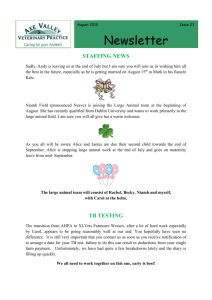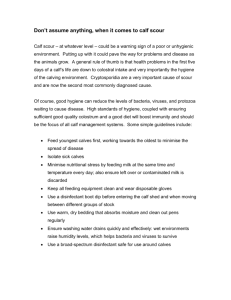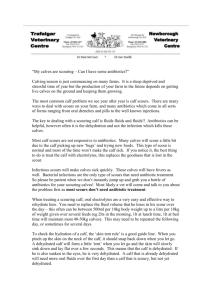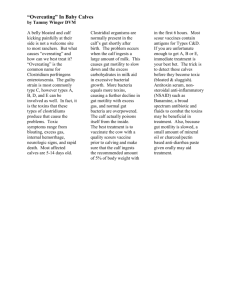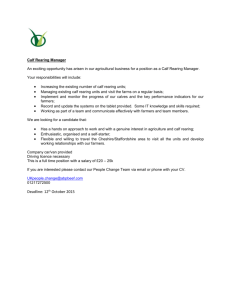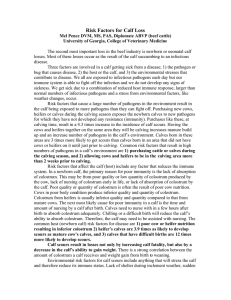Salmonella threat in young calves
advertisement
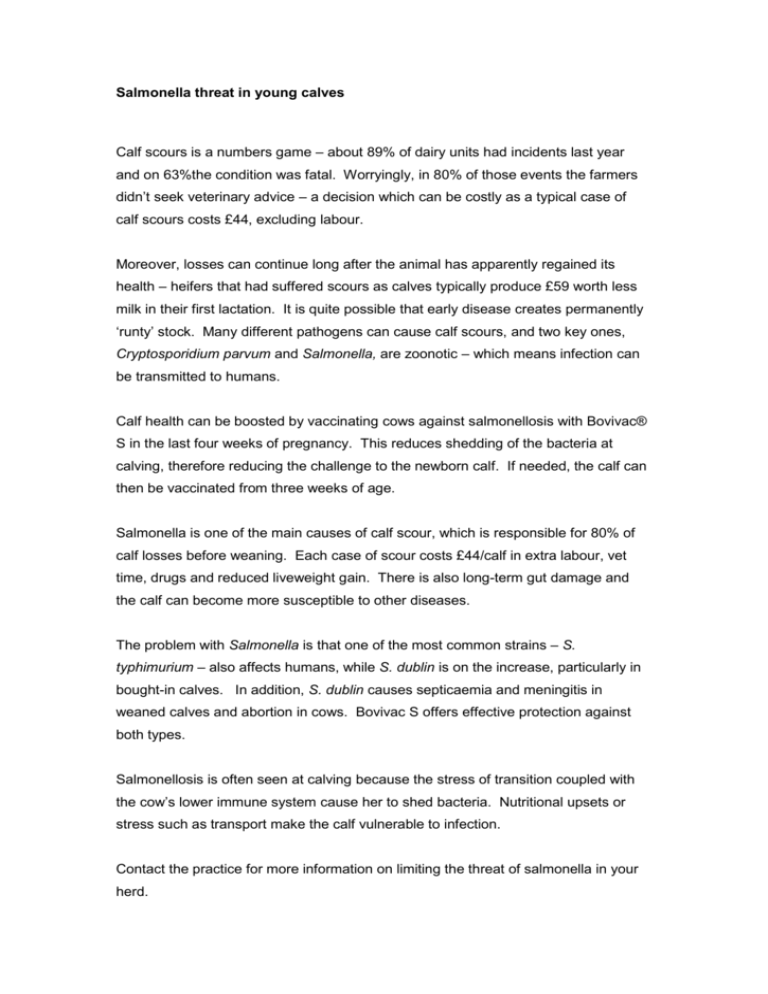
Salmonella threat in young calves Calf scours is a numbers game – about 89% of dairy units had incidents last year and on 63%the condition was fatal. Worryingly, in 80% of those events the farmers didn’t seek veterinary advice – a decision which can be costly as a typical case of calf scours costs £44, excluding labour. Moreover, losses can continue long after the animal has apparently regained its health – heifers that had suffered scours as calves typically produce £59 worth less milk in their first lactation. It is quite possible that early disease creates permanently ‘runty’ stock. Many different pathogens can cause calf scours, and two key ones, Cryptosporidium parvum and Salmonella, are zoonotic – which means infection can be transmitted to humans. Calf health can be boosted by vaccinating cows against salmonellosis with Bovivac® S in the last four weeks of pregnancy. This reduces shedding of the bacteria at calving, therefore reducing the challenge to the newborn calf. If needed, the calf can then be vaccinated from three weeks of age. Salmonella is one of the main causes of calf scour, which is responsible for 80% of calf losses before weaning. Each case of scour costs £44/calf in extra labour, vet time, drugs and reduced liveweight gain. There is also long-term gut damage and the calf can become more susceptible to other diseases. The problem with Salmonella is that one of the most common strains – S. typhimurium – also affects humans, while S. dublin is on the increase, particularly in bought-in calves. In addition, S. dublin causes septicaemia and meningitis in weaned calves and abortion in cows. Bovivac S offers effective protection against both types. Salmonellosis is often seen at calving because the stress of transition coupled with the cow’s lower immune system cause her to shed bacteria. Nutritional upsets or stress such as transport make the calf vulnerable to infection. Contact the practice for more information on limiting the threat of salmonella in your herd.

